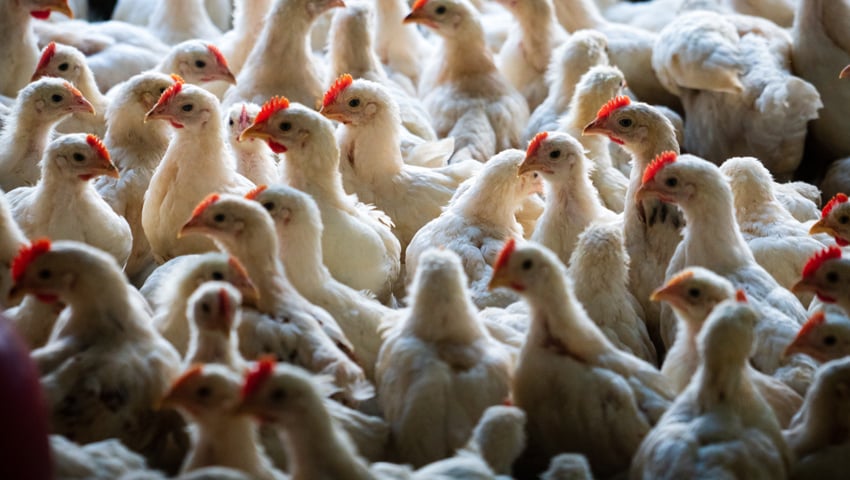Scientists have used gene editing techniques to identify and change parts of chicken DNA that could limit the spread of the bird flu virus in the animals.
Researchers were able to restrict – but not completely block – the virus from infecting chickens by altering a small section of their DNA. The birds showed no signs that the change in their DNA had any impact on their health or wellbeing.
The researchers say that their findings are an encouraging step forward, but experts highlight that further gene edits would be needed to produce a chicken population which cannot be infected by bird flu – one of the world’s most costly animal diseases.
Compassion in World Farming, however, is not impressed. Peter Stevenson OBE, Chief Policy Advisor said, “Gene editing is not the way forward for tackling bird flu. The research shows there is a real danger that bird flu viruses will simply mutate to evade the edited genes. Indeed when mutating, the bird flu viruses could become more virulent.
“Highly pathogenic bird flu has not been caused by wild birds; it has been generated by the crowded, stressful conditions of industrial poultry production. The proper approach to bird flu necessitates a radical restructuring of the poultry sector [https://8point9.com/major-reforms-essential-for-poultry-industry-to-address-bird-flu/] to reduce stocking densities and flock sizes as well as to reduce the number of farms clustered in particular areas. A similar rethinking of the pig sector is needed as pigs can act as ‘mixing vessels’ for human, avian and pig influenza viruses.’
Scientists from University of Edinburgh, Imperial College London and the Pirbright Institute bred the chickens using gene editing techniques to alter the section of DNA responsible for producing the protein ANP32A. During an infection, flu viruses hijack this molecule to help replicate themselves.
When the ANP32A gene-edited chickens were exposed to a normal dose of the H9N2-UDL strain of avian influenza virus – commonly known as bird flu – 9 out of 10 birds remained uninfected and there was no spread to other chickens.
The research team then exposed the gene-edited birds to an artificially high dose of avian influenza virus to further test their resilience. When exposed to the high dose, half of the group – 5 out of 10 birds – became infected. However, the gene edit did provide some protection, with the amount of virus in the infected gene-edited chickens much lower than the level typically seen during infection in non-gene-edited chickens.
The gene edit also helped to limit onward spread of the virus to just one of four non-gene-edited chickens placed in the same incubator. There was no transmission to gene-edited birds.
Bird flu is a major global threat, with a devastating impact in both farmed and wild bird populations. In the UK alone, the current outbreak of H5N1 bird flu has decimated seabird populations and cost the poultry industry more than £100 million in losses.
Professor Mike McGrew, the study’s principal investigator, from the University of Edinburgh’s Roslin Institute said, “Bird flu is a great threat to bird populations. Vaccination against the virus poses a number of challenges, with significant practical and cost issues associated with vaccine deployment. Gene-editing offers a promising route towards permanent disease resistance, which could be passed down through generations, protecting poultry and reducing the risks to humans and wild birds. Our work shows that stopping the spread of avian influenza in chickens will need several simultaneous genetic changes.”
